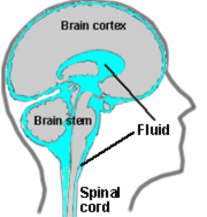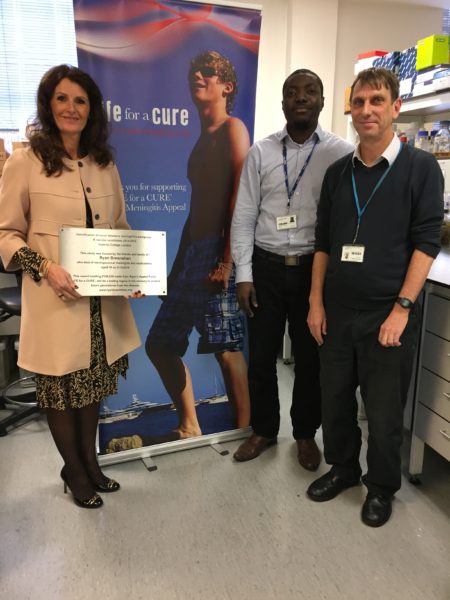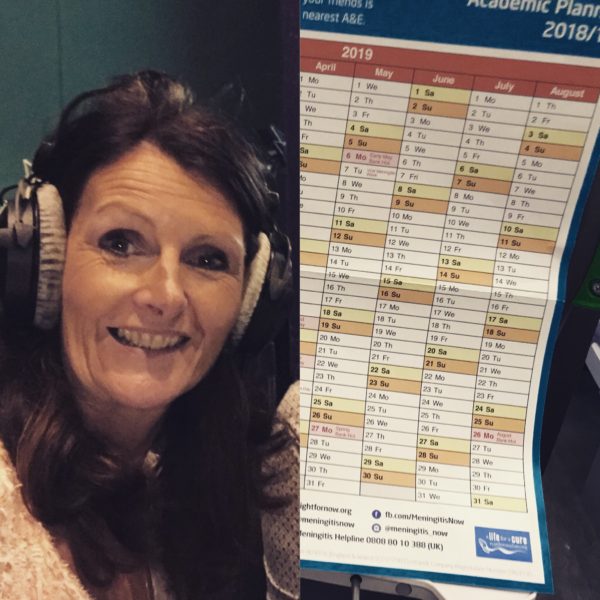About Meningitis
Meningitis is a very frightening disease because it can strike so quickly, causing someone to become seriously ill within hours and if not treated successfully can cause death and serious disability. In Ryan’s case, this was within less than 1 hour!!
It does not discriminate and can affect anyone of any age or ethnic origin. Knowing the common symptoms is vital, as prompt medical treatment can mean the difference between life and death. Download the mobile App NOW to have all the information at your fingertips.
PLUS – Watch this Video and share with your loved ones to help their understanding – https://www.meningitisnow.org/meningitis-explained/signs-and-symptoms/signs-and-symptoms-video/
What is meningitis?
Meningitis is caused when the protective membranes covering the brain and spinal cord – known as the meninges – become inflamed, usually as a result of an infection.
This infection is usually caused by viruses or bacteria.
It may also develop following a serious injury to the head or spine, or by a fungal infection. Although it can be very unpleasant, most people with viral meningitis make a full recovery within a couple of weeks.

Meningitis describes any infection to the fluid that surrounds the brain and spinal cord (shown in blue on the diagram), which is contained within protective membranes called the meninges. Picture courtesy of www.schoolscience.co.uk
Bacterial meningitis however, is life-threatening and requires urgent medical treatment. The disease can strike with incredible speed and can kill someone in hours or cause permanent disability such as loss of limbs, blindness, deafness and brain damage.
Bacterial meningitis can be caused by a range of different bacteria. The most common form of bacterium in the UK is the meningococcus, which is most prevalent in children under the age of five and young adults aged 14-24.
The bacteria normally live harmlessly at the back of the nose and throat and can be found in around 10% of the population at any one time. The bacteria can only be passed from person to person in nasal or oral droplets, for example by kissing or sneezing and even when passed on, are usually unlikely to cause problems, as most people have natural resistance to the bacteria.
However, in some cases, the bacteria go beyond colonisation, and cross into the bloodstream to cause serious disease.
The bacteria can cause two distinct forms of the disease
The bacteria can cause two distinct forms of the disease – meningitis (infection of the meninges that surround the brain) and septicaemia (blood poisoning)… The strain that took Ryan’s life. Meningococcal septicaemia and meningococcal meningitis can occur together or separately.
A major problem with bacterial meningitis is that the symptoms are often mistaken for the common flu. By the time the patient is diagnosed it can be too late to save them.
Usually the first symptoms of meningitis and septicaemia are classic flu-like symptoms, a fever and headache, often accompanied by nausea and vomiting, or aching joints. Signs of meningitis also include stiffness in the neck and an aversion to bright light, whilst the clearest symptom of septicaemia is a pinprick rash which can be identified by the simple glass test.
However, many patients show these more specific symptoms too late or not at all, which makes the disease very difficult to diagnose. This, in addition to the incredible speed by which the disease strikes, is why we believe at Meningitis Now that the only way to truly eradicate the disease is through prevention.
Visit Meningitis Now to Find out More
Visit Meningitis Now to find out more about the various types of bacterial meningitis such as meningococcal, pneumococcal, group B streptococcus or tuberculosis meningitis or if you have a specific question, why not try the list of frequently asked questions.
For more information about prevention, visit the vaccines section to find out about the current vaccines available or the research section to learn more about the important work that Meningitis Now and ‘a LIFE for a CURE’ is doing.
The most important thing to remember is to FOLLOW YOUR INSTINCTS AND ACT FAST. If you think something is wrong, GO IMMEDIATELY TO YOUR NEAREST GP OR CASUALTY UNIT.
About Your Money
We will be updating this section on a regular basis as we focus more specifically on the many research projects, and meet a number of leading figures and scientists all focussed on making a real difference.
Ryan’s appeal fund ‘a LIFE for a CURE’ is wholly committed to supporting the right projects and whilst acknowledging the merits of them all, will seek to drill down and channel funds to achieve the best results possible.
It is, without doubt, a journey into the unknown and with the help of Meningitis Now and the quality due diligence undertaken both before and during the projects, we will do our utmost to channel your funds to the very best use possible.
Here are the projects that we’ve supported so far;-
University of Sheffield – Professor Rob Read £134,000 – Discovering new methods of inhibiting carriage of N. meningitidis with N. lactamica

Full details of the study and the results can be found here;-
Imperial College, London Professor Paul Langford £148,000 – Men B vaccination and bacterial carriage.

Full details of the study and the results can be found here;-
Meningitis Now Student Awareness Campaigns for 2017 and 2018 – Financed £80,000.
Thank you so much for all your support over the years enabling us to raise great meningitis awareness directly to the 2nd at-risk age group 15-24 year olds.
As part of the 2018 campaign, Michelle shared Ryan’s story to 25 million radio listeners encouraging ALL students to be aware of all the signs and symptoms and obtain meningitis vaccinations available. This is especially relevant at University where the signs are similar to ‘Freshers Flu’ or a hangover.

One GP contacted the charity within minutes of hearing the broadcast on Radio 5 Live;-
Heard Michelle on 5 Live this am, we’ve had two patients book for their Men ACWY vaccines as a result of hearing the radio.
Please read and share this TAB article that has reached a vast student audience.



